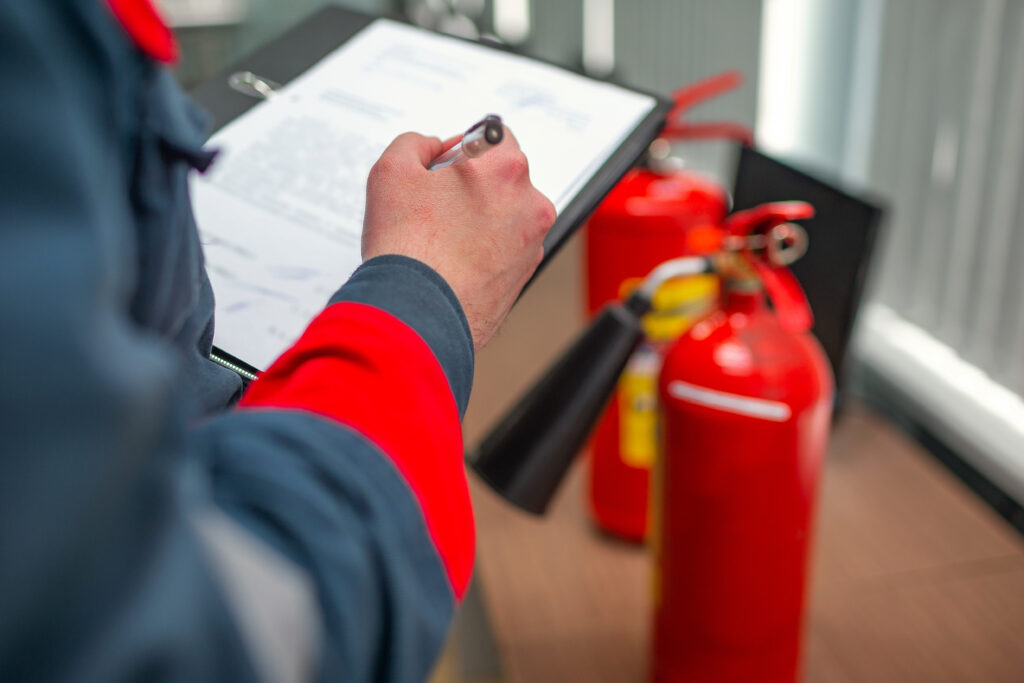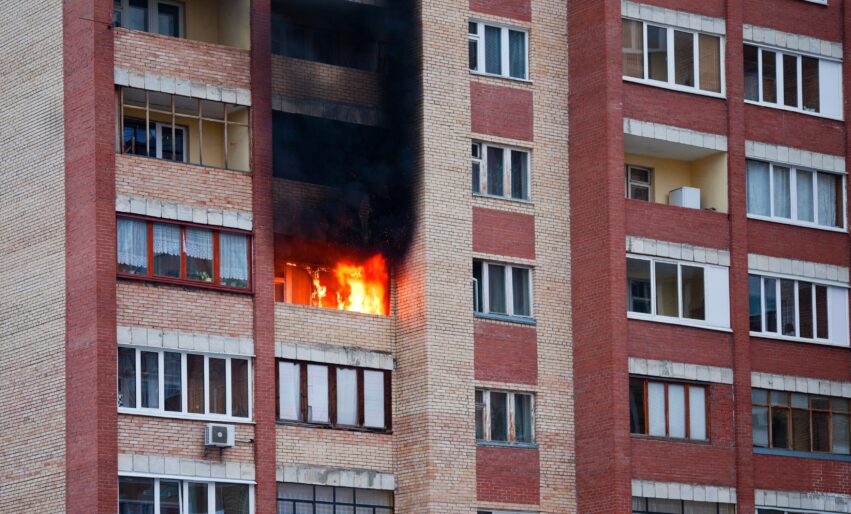Navigating Fire Codes across Canada can be a daunting task—that’s why fire safety plans exist. What’s more, they should be reviewed annually, and updated as needed, to best manage risk in the event of a fire.
In apartment buildings, fire safety plans help ensure the effective use of equipment, fire safety systems, and procedures to protect occupants when hazard strikes. These documents are required by law for almost every apartment building in Canada. For those that don’t require one, the building owner must still comply with the Fire Code. In other words, fire safety plans are the best way to ensure compliance.
Typically, a building’s detailed Fire Safety Plan is developed to meet the Fire Code requirements, after which it must be reviewed by the Chief Fire Official of a local fire department. Upon approval, the property manager, on behalf of the apartment building owner, must implement the plan, often within a 30-day period.
 Staff training & implementation
Staff training & implementation
All supervisory staff members with roles and responsibilities outlined in the Fire Safety Plan must receive a full copy to ensure they are up to speed. This typically includes the building manager, the building superintendent, and sometimes cleaning personnel and trades.
In addition to distributing the plan, property managers are required to maintain evidence of staff training conducted as per site specifics, and maintain thorough up-to-date training records, certificates, or rosters. Most fire safety plans have an “Acknowledgement Table” for supervisory staff to sign every 12 months, ensuring they are aware of their roles and duties. Completing this step is critical in that it provides evidence of compliance for the property manager, and failing to obtain sign-off may result in a Notice of Violation for not implementing the plan accordingly.
Transparency & preparation
While it isn’t necessary to distribute the full Fire Safety Plan to residents, applicable pages should be provided to tenants so that they understand what to do in the event of a fire alarm and know what to expect from staff. A fire-safe building begins with everybody understanding their roles, whether it’s during a fire drill or a real emergency. Transparency and preparation are known to reduce resident complaints after a fire alarm by over 50 per cent—and more importantly, they consistently lead to significantly safer outcomes.
Communicating fire safety procedures to residents can be done via email using a PDF attachment; after which the communication should be documented as part of the risk management program for the owner. The best time to share this info is right after the tenant moves in, but annual reminders are also advised. Additionally, property managers should consider holding “Resident Information Evenings” every so often to inform about evacuation procedures and other fire safety tips and reminders. There should also be a printed copy of the approved Fire Safety Plan, floor plans, drawings, and a current list of Persons Requiring Assistance (PRA) during a building evacuation inside the Fire Safety Plan box on site, for retrieval by arriving fire services.
Documenting inspections
The approved Fire Safety Plan should include an overview of any weekly or monthly inspections, system checks, and other tests related to maintaining a fire-safe building. As with staff training, these inspections should be documented as they occur and are typically assigned to the superintendent. While the Fire Code does not specifically state the need for documentation records for all inspections, other standards do require evidence, and industry best practices suggest documentation should be retained for a period of 12 months. It is this documentation that proves your efforts under the Occupational Health and Safety Act, as well as the Occupiers Liability Act.
In addition to inspections conducted by staff, the approved Fire Safety Plan should also keep a record of any tests completed by third-party service providers. This includes annual fire alarm and sprinkler testing, generator testing and other regular inspections. Remember, each apartment building is unique with specific requirements for preventative maintenance. Always follow the Fire Safety Plan and keep records up to date.
Keeping the plan current
Finally, a Fire Safety Plan must be current, ensuring it reflects all conditions in a building. As stated, it must be reviewed at least once every 12 months and updated whenever there is a change due to building upgrades or renovations, occupancy, new technology or other factors affecting the plan. For example, many 2024 Fire Safety Plans are now being updated to include risks associated with Lithium-Ion batteries, to draw attention to their potential hazards and keep residents and building staff informed of their risks.
When a Fire Safety Plan is created and implemented properly, it can reduce damage to the building and ensure the safety of all individuals residing within it. Property managers are the primary connection to maintaining a fire-safe building.
Visit www.nationallifesafetygroup.ca or call 647-794-5505 for more info





